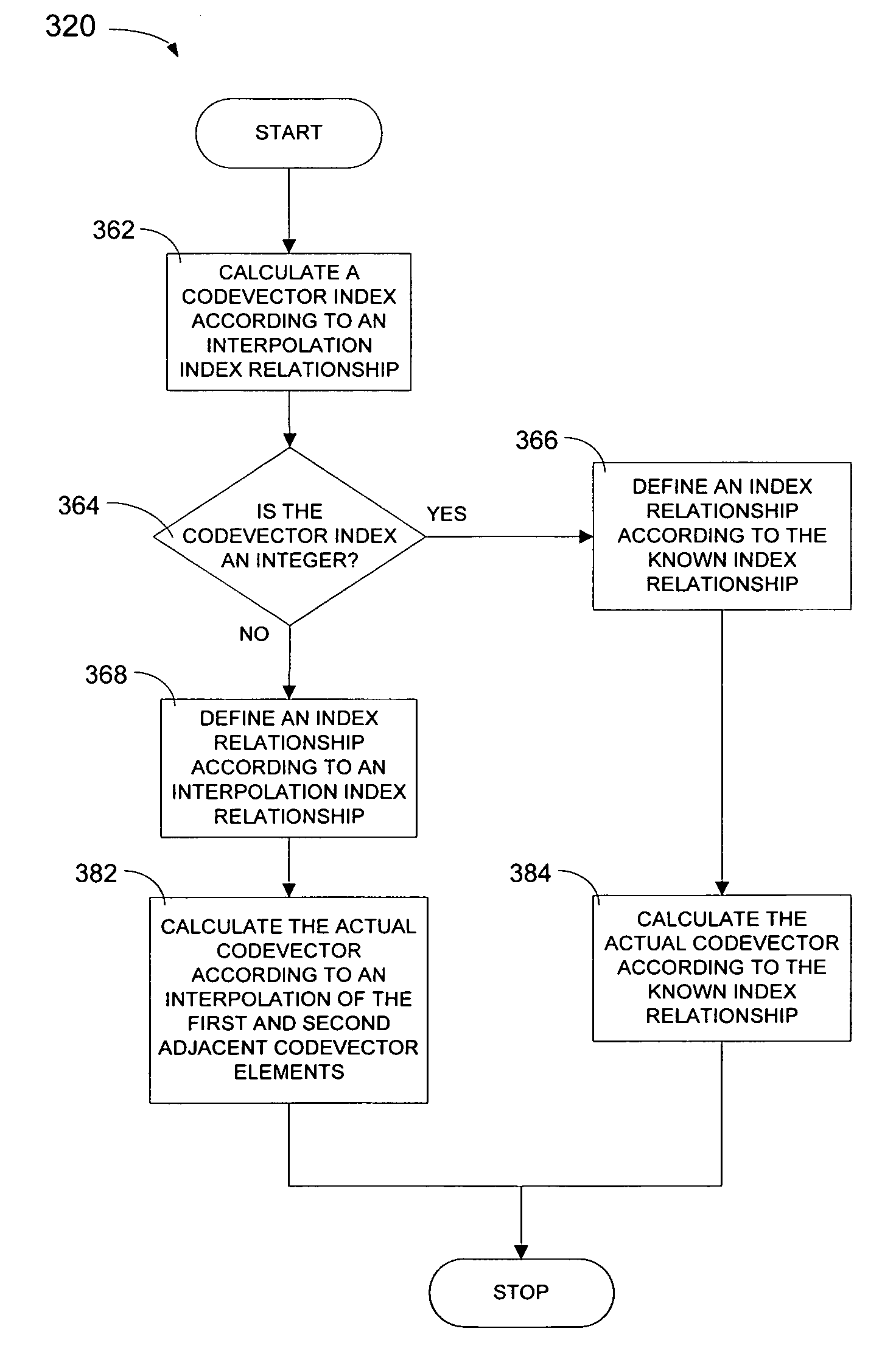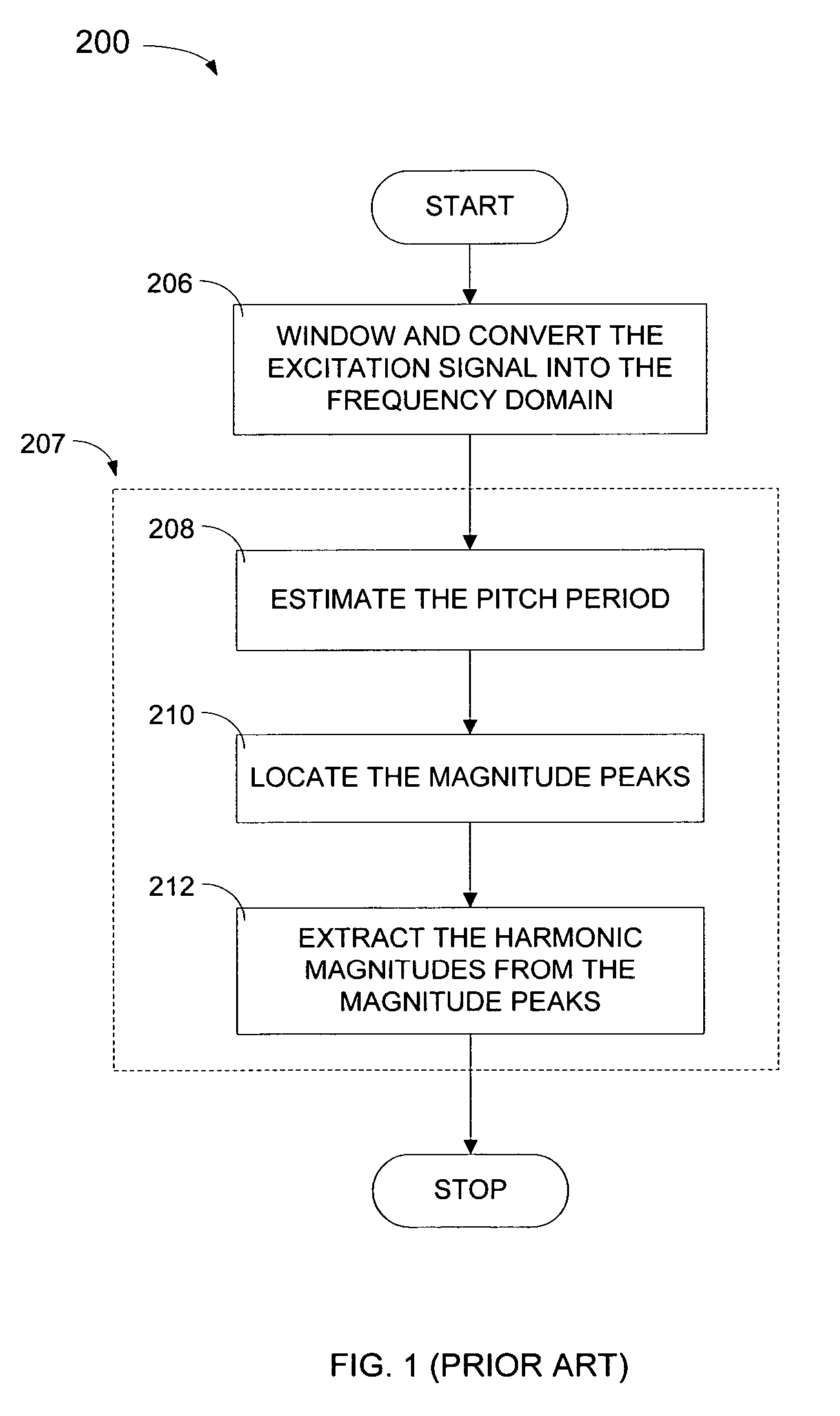Methods and apparatuses for variable dimension vector quantization
a vector and variable dimension technology, applied in the field of methods and apparatuses for variable dimension vector quantization, can solve the problems of large bandwidth and memory capacity of direct sampling systems, inability to analyze and synthesis intervals the same, and suffer the quality of speech coders' synthesized speech, so as to facilitate codebook generation or optimization, improve the effect of quality
- Summary
- Abstract
- Description
- Claims
- Application Information
AI Technical Summary
Benefits of technology
Problems solved by technology
Method used
Image
Examples
Embodiment Construction
[0083] Improved variable dimension vector quantization-related (“VDVQ-related”) processes have been developed that not only provide improvements in quality over existing VDVQ processes but can be applied to a wider variety of circumstances. More specifically, the improved VDVQ-related processes provide quality improvements in codebook generation and the quantization of harmonic magnitudes, and facilitate codebook generation or optimization for a broad range of distortion measures, including those that would involve inverting a singular matrix using known centroid computation techniques.
[0084] The improved VDVQ-related processes include, improved methods for extracting an actual codevector from a codevector, improved methods for codebook optimization, improved VDVQ procedures, improved methods for creating an optimum partition, and improved methods for harmonic coding. Additionally, these improved VDVQ-related processes have been implemented in software and various devices to create...
PUM
 Login to View More
Login to View More Abstract
Description
Claims
Application Information
 Login to View More
Login to View More - R&D
- Intellectual Property
- Life Sciences
- Materials
- Tech Scout
- Unparalleled Data Quality
- Higher Quality Content
- 60% Fewer Hallucinations
Browse by: Latest US Patents, China's latest patents, Technical Efficacy Thesaurus, Application Domain, Technology Topic, Popular Technical Reports.
© 2025 PatSnap. All rights reserved.Legal|Privacy policy|Modern Slavery Act Transparency Statement|Sitemap|About US| Contact US: help@patsnap.com



